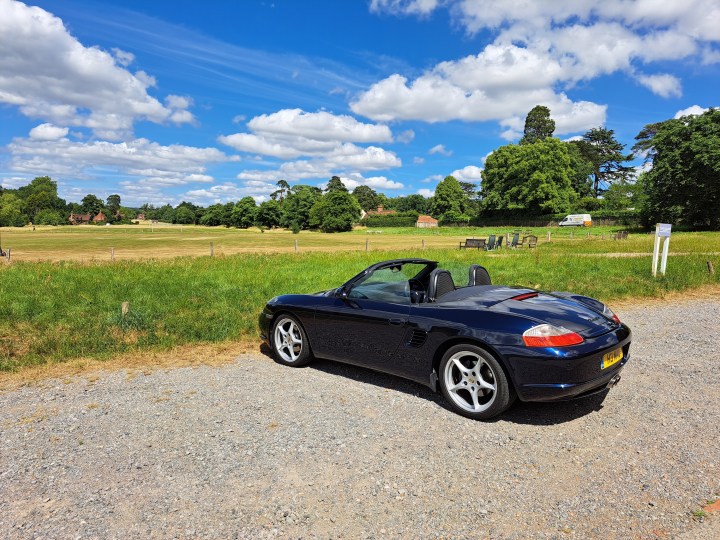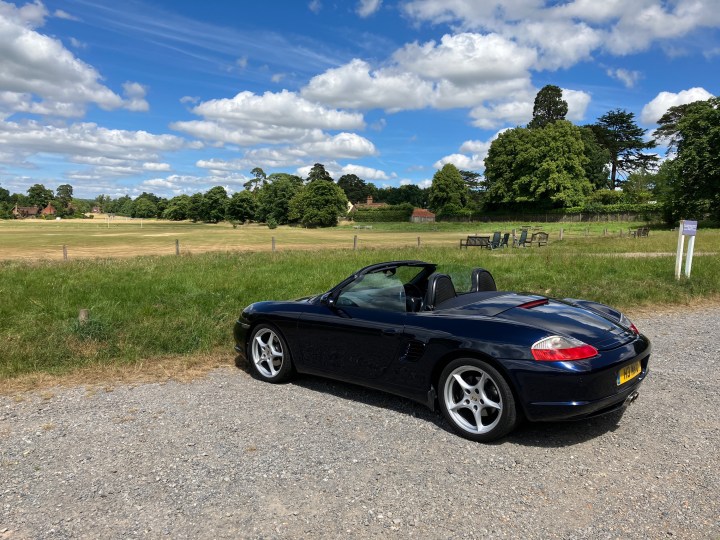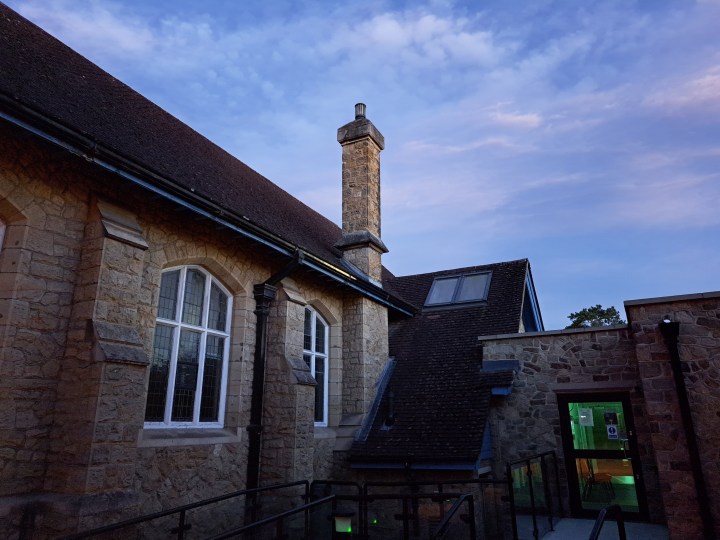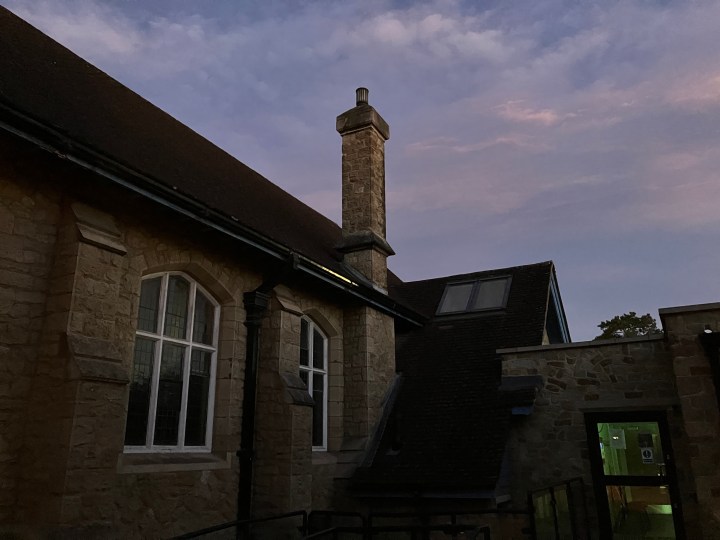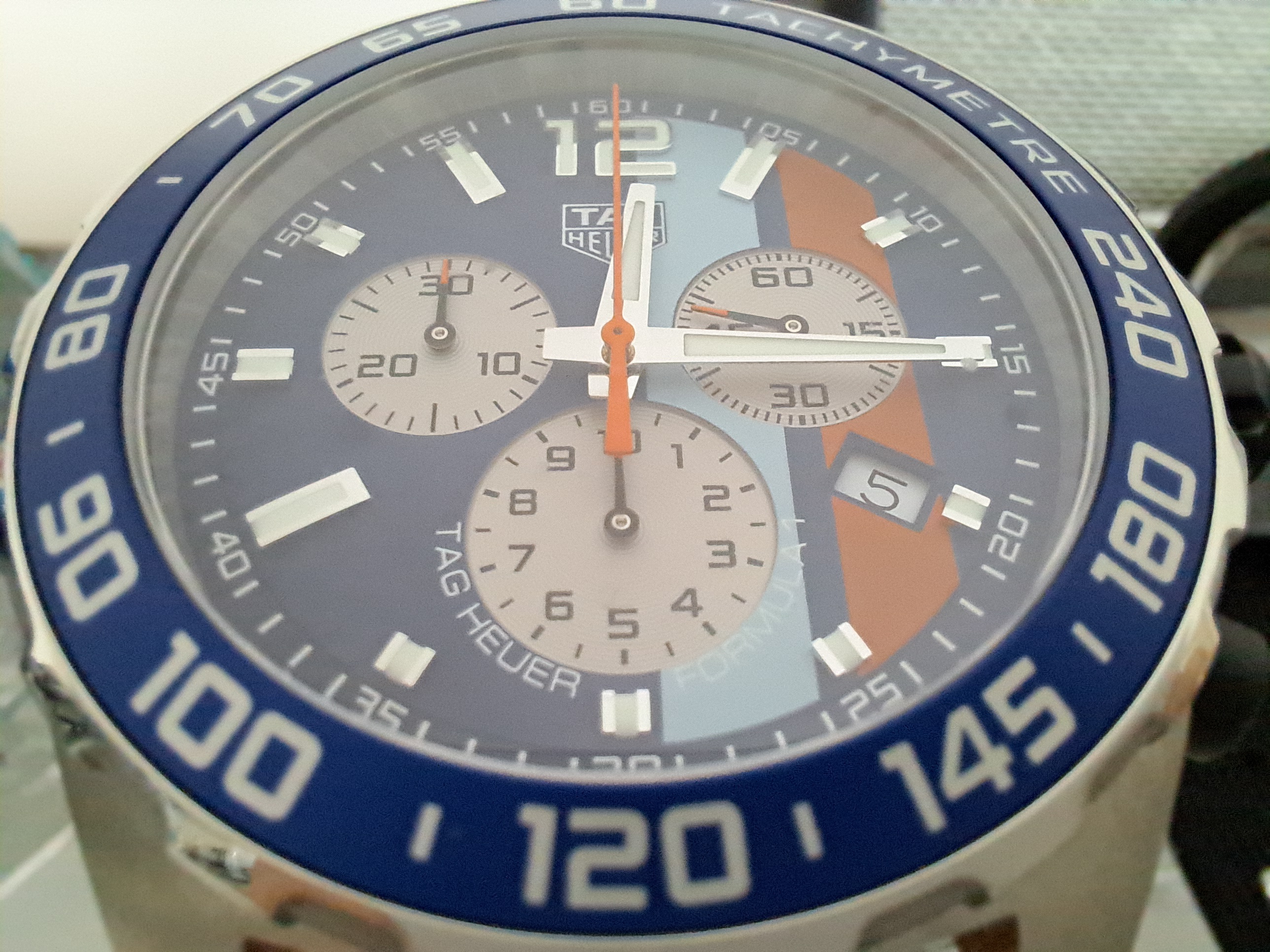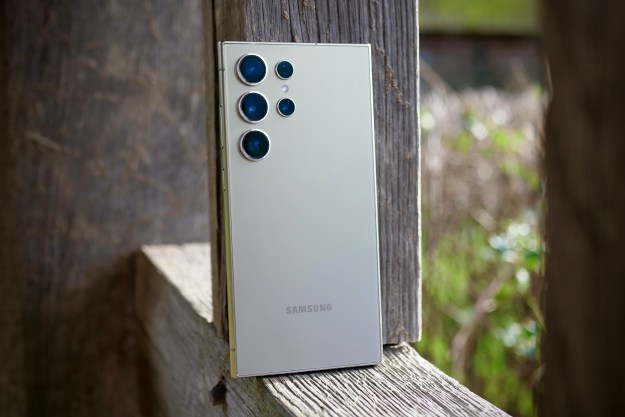Samsung or Apple? It’s a common question among tech fans, and there’s never an easy answer. Here, we’ve got two of the brand’s most popular devices facing off against each other in a camera shootout, but instead of putting the most expensive models into battle, it’s a pair of far cheaper ones — the Apple iPhone SE (2022) and the Samsung Galaxy A53 5G.
Is it a fair fight? The Galaxy A53 comes with four cameras on the back, making it look far superior next to the iPhone SE (2022)’s lowly single camera. And even the selfie camera on Samsung’s phone has more than four times the amount of megapixels! Surely, this is a battle that can only go one way? Well, not necessarily.
What are the differences?
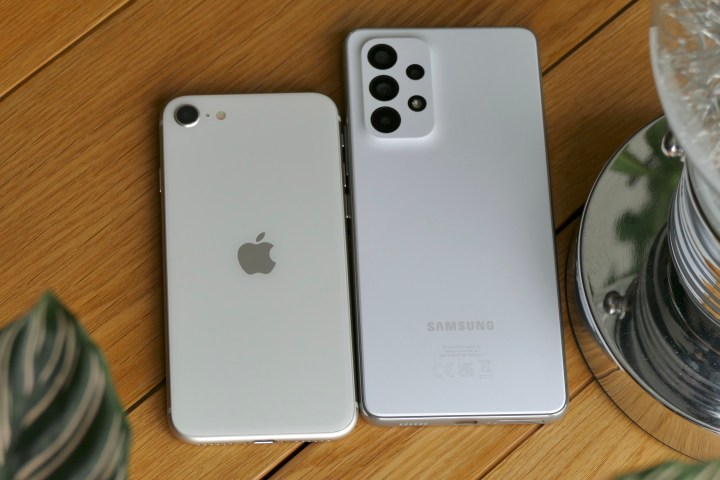
If you’ve got under $500 to spend on a new smartphone, both the iPhone SE (2022) and the Galaxy A53 5G should be on your list. You can get the Samsung phone for around $450, while the iPhone SE is yours for $429. There’s not a big difference in price, but there’s one big difference when you pick them up.
The iPhone SE (2022)’s 4.7-inch screen makes the phone feel very small by modern standards, while the 6.5-inch Galaxy A53 could easily be mistaken for an expensive, high-spec flagship. The iPhone’s small size does have its advantages. It is perfectly pocketable, daintily styled, and wonderfully ergonomic. While the Galaxy A53 does have a slick, modern design, it’s definitely not dainty and pockets need to be deep to accommodate it.
Flipping the phones over, the iPhone is made of glass and the Galaxy A53 is plastic. There’s a single, 12-megapixel camera on the back of the iPhone with optical image stabilization and an f/1.8 aperture. The back of the Galaxy A53 has a 64MP main camera with optical image stabilization, plus a 12MP wide-angle camera, and a pair of 5MP cameras for macro and depth duties. The two phones really couldn’t be any more different.
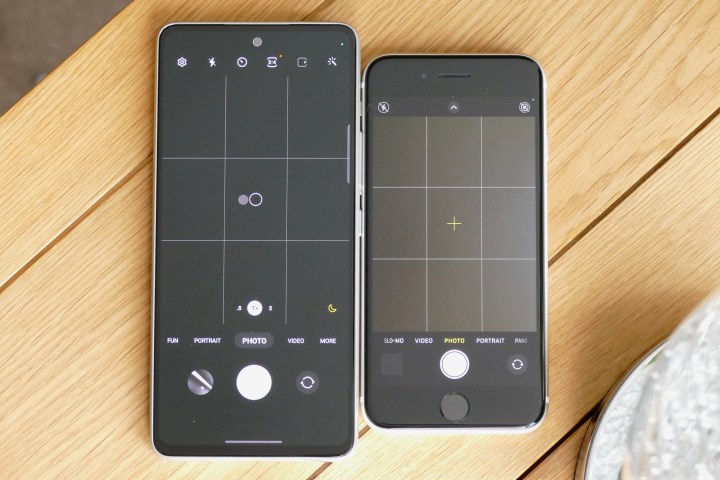
That makes the test more fascinating. We’ve long said the low-megapixel sensors that pad out the camera lineup on many cheap Android phones are a waste of time, so do Samsung’s sensors offer tangible benefits over a high-performing single camera in the real world? That’s what we’re going to find out.
Focal length and apps
Before we get started, you’ll probably notice the Galaxy A53 and iPhone SE (2022)’s photos appear quite different — making it look like I was sometimes standing a lot closer to the subject when shooting with the iPhone. I wasn’t, and it’s because the two cameras have different focal lengths. The Galaxy A53 has the equivalent of a 26mm focal length lens and the iPhone SE (2022) has the equivalent of a 28mm focal length lens.
A word on the camera apps, too. I activated the camera from the lock screen most of the time, and the Galaxy A53 felt ponderous next to the lightning-fast iPhone SE (2022), with a several-second pause while it opened the camera ready for use. It’s an important thing to note, as often moments we want to capture can be over very quickly, and every second can count. The iPhone SE (2022) is always ready for action faster than the Galaxy A53. Now, on to the photos.
Main camera
Let’s start with the photo of the car. The Galaxy A53’s photo is bright, vivid, and colorful. Comparatively, the iPhone sets a more natural and realistic tone. There’s no question the scene was closer to the iPhone’s photo in real life. The grass doesn’t look radioactive, the contrast is perfect between the clouds and blue sky, and the gray gravel is filled with detail.
- 1. Galaxy A53
- 2. iPhone SE (2022)
But the exposure robs the iPhone’s photo of some detail. The shadow dulls the car’s shine in comparison to the A53’s image, and the side vent is barely visible. The blue paintwork is more noticeable in the A53’s photo, and while many may not like the amount of visual pop, there’s no doubt it’s an incredibly eye-catching shot. It’s the one most people would want to share online without any editing.
The way the iPhone deals with exposure and contrast causes problems in the photo of the sign, too. The Galaxy A53 brings out the texture of the rusty metal far more than the iPhone, showing more of the aged and weathered appearance that made me want to take this photo in the first place. The leaves above it are sharp and defined, and the sky is harsh and moody. The iPhone blows the sky out, and the leaves lack detail compared to the Samsung phone.
- 1. Galaxy A53
- 2. iPhone SE (2022)
Finally, here’s an example of how much difference the focal lengths can make to a photo. I stood in exactly the same spot to take the photos of the canal boats, and the Galaxy A53’s wider field of view captures more of the scene. While this is the case for all the photos here, this one really emphasized the difference.
Leaving the field of view aside, the Galaxy A53’s photo shows the reflection of the boats and trees in the water more, but the detail on the boat itself is lacking. I prefer the iPhone’s handling of the name, the red door, and the balance between the green and yellow sections. The yellow is too pronounced — actually throughout the image, not just on the boat — in the A53’s photo.
- 1. Galaxy A53
- 2. iPhone SE (2022)
What does all this mean for the conclusion? It’s tough to judge, as the iPhone’s natural tone can work so well, as proven in the canal boat image. But as with the photo of the car, the lack of visual pop also hurts it. It’s the wider field of view and better contrast that swings the win in the Galaxy A53’s direction.
Winner: Samsung Galaxy A53
Main camera indoors
This photo was taken in the early evening and the light was quite low, to the point where the Galaxy A53 did at one point suggest I use Night mode. This example does not use Night mode. For all the photos that don’t use Portrait mode, I just point-and-click, so it’s interesting here the iPhone focused on the wheel while the A53 just settled on the center of the image.
- 1. Galaxy A53
- 2. iPhone SE (2022)
The iPhone actually gets everything right here. It correctly selects the most attractive focal point, and it gets the color of the wall behind the objects correct (unlike the far starker white in the Galaxy A53’s photo). The green of the main Lego pieces is also more realistic, and I love the background blur in the iPhone’s photo.
Many times we will take only one photo and either hope or expect it to come out the way we want. The iPhone SE (2022)’s photo looks how I would have hoped, while the Galaxy A53’s photo is ordinary by comparison. I’d delete the Samsung picture and move on, while I may consider sharing the iPhone’s shot. It’s exactly the level of reliability I want from a camera on my phone.
Winner: Apple iPhone SE (2022)
Digital zoom
Neither cameras have an optical zoom mode, but Samsung encourages you to zoom in with the addition of a 2x option in the camera app. The iPhone makes it far less attractive to do so, forcing you to pinch the screen to zoom in, and then not providing a numbered zoom level. Should Samsung be so confident about its zoom ability?
- 1. Galaxy A53
- 2. iPhone SE (2022)
No, it should not. This photo was designed to show the cute wooden owl placed inside the tree trunk. Tap the 2x option on the Galaxy A53 and you get a noisy photo in return, lacking detail and muddying the background in an unpleasant way. The owl itself is visible, but the exposure means it’s a little lost in the tree trunk. The colors make the photo look harsh and unattractive.
What about the iPhone SE? It’s far better, which may come as a surprise. The colors are more natural and less distracting, there’s more detail in the wood, the background, and the water. Plus, the owl is far more obvious in the tree trunk. For a phone that doesn’t want you to zoom in, the iPhone impresses far more than you may expect.
Winner: Apple iPhone SE (2022)
Night mode
What do you want from photos you take in lowlight settings? If you want them to be bright enough that you can see plenty of detail, and aren’t worried about a very natural look, then the Galaxy A53’s performance here will likely win you over. But that doesn’t mean it automatically wins, as you’ll see. The photo of the church is a prime example of what’s good and bad about a highly tuned Night mode.
- 1. Galaxy A53
- 2. iPhone SE (2022)
The A53’s photo is far brighter than what I saw with my own eyes, and even the iPhone’s darker image shows more information than I really saw, making them both “good” in that respect. The Galaxy A53’s representation of the blue sky is ridiculous, seeing as the photo was taken at 10:10 p.m., while the iPhone’s darker sky is more realistic. However, the level of detail in the Galaxy A53’s photo is far superior. The walls have texture and you can pick out individual blocks, and there’s visible weathering on the sloping roof.
The second photo was taken even later and it was properly dark at the time. The iPhone does a surprisingly good job of capturing and isolating the different colors of the flowers, and the blur may be due to the wind blowing at the time of the photo rather than any major fault of the camera. The Galaxy A53 is clearly brighter, with far more obvious colors.
- 1. Galaxy A53
- 2. iPhone SE (2022)
Zoom in on both and there’s plenty of noise, but less so in the A53’s photo, where the small blue and white flowers have more shape and definition compared to the noisier blobs in the iPhone’s photo. It’s obviously not a picture you’d normally take, but it’s a great example of how each camera will handle colors in lowlight settings. The Galaxy A53 will help you bring out more color and detail at night.
Winner: Samsung Galaxy A53
Portrait selfie
Both phones have very different selfie cameras. The Galaxy A53 has a 32MP selfie cam, while the iPhone SE (2022) has a 7MP selfie camera. With a megapixel deficit like that, surely the Galaxy A53 is going to walk away with this, right? As if to serve as yet another reminder that more megapixels don’t always mean better photos, don’t be so fast to judge.
- 1. Galaxy A53
- 2. iPhone SE (2022)
Right from the outset, the iPhone SE nails the skin tone in a way the Galaxy A53 cannot replicate. I’m not exactly tanned, but I’m not as pasty as the A53 makes out. Even if I’m deluding myself, I’d still rather take the iPhone’s coloration. But the differences really come when you zoom in.
The lack of detail in the Galaxy A53’s photo is astonishing considering how many additional megapixels it has to play with, while the iPhone captures a massive amount of skin texture and tone (and all the evidence I hadn’t bothered to shave ahead of taking the selfie). The portrait effect is also more subtle in the iPhone SE’s photo, with less aggressive edge enhancement. There is an obvious jagged edge to my cheek in the A53’s image, which is far less prominent in the iPhone SE’s photo.
It’s an easy win for the iPhone SE (2022) and a very clear example of more megapixels making no difference at all to the final image.
Winner: Apple iPhone SE (2022)
Feature advantages
The Galaxy A53 has more camera lenses than the iPhone SE, and therefore has more on-paper versatility, but are its abilities worth using? The selfie camera’s megapixels didn’t help it take better photos than the iPhone, so more is definitely not always better here. There are three primary features the iPhone cannot replicate — wide-angle, macro, and blurred backgrounds.

Having a wide-angle camera is a considerable advantage, and the Galaxy A53’s wide-angle camera is quite consistent with its results, matching the main camera for visual impact with its bright colors and enhanced contrast. It’s not very good in poor lighting though, and results suffer from a lack of detail and digital noise in those environments. However, it’s better to have the option to take a wide-angle photo than not.
The Galaxy A53’s Portrait mode has an advantage over the iPhone’s Portrait mode in that it works with objects and not just faces. The iPhone’s Portrait mode with the rear camera only blurs the background when it sees a person’s face, but the Galaxy A53 doesn’t mind what you point the camera at and will blur the background accordingly. It’s not really an advantage though. See the two examples below, where the A53 struggles to blur out the background effectively, resulting in a confused, ugly, and obviously manipulated photo.
Finally, there’s the macro mode, which uses the 5MP macro camera. The iPhone SE won’t focus on anything that’s really close-up, while the Galaxy A53 suggests swapping to the macro camera when it recognizes the main camera can’t focus. Unfortunately, you won’t want to do this very often. The photo of the watch face shows how poor the results are, with dull colors, very little detail, and plenty of noise.
Just because the features are there, it doesn’t mean you’ll ever want to use them. The wide-angle camera is the only additional feature you’ll regularly use on the Galaxy A53. That said, special mention should go to Samsung’s fun Single Take mode, which is unusual and actually useful — and something the iPhone cannot replicate.
More isn’t always better
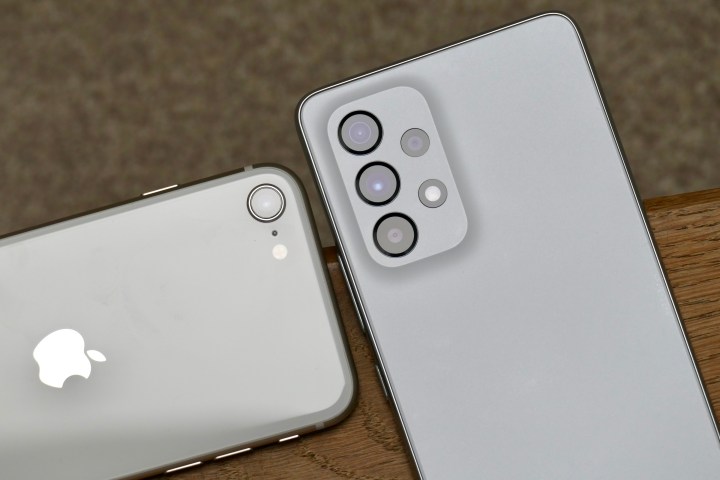
There are five categories in total, and the iPhone SE (2022) won three compared to the Galaxy A53’s two. The iPhone SE (2022) does an impressive job considering it has the “disadvantage” of only having one camera. Its photos may lack the visual pop of the Galaxy A53’s, but they’re still highly detailed, accurate, and technically very accomplished. Night mode is also more realistic, but not as effective at brightening the scene as the A53’s. Furthermore, the selfie camera performance trounces the Galaxy A53. It even did a far better job with the digital zoom, despite not making a big deal out of the feature.
However, it’s impossible to ignore the Galaxy A53’s wide-angle camera. The other extra features aren’t worth using, but the wide-angle option does introduce additional versatility the iPhone cannot replicate. Despite the Galaxy A53 having four cameras though, you’ll probably only want to use two of them. It’s a reminder not to take what marketing departments tell you all that seriously when it comes to multiple cameras on cheaper phones.
The Galaxy A53 has a good main camera and the photos it takes are instantly sharable, plus the wide-angle camera adds fun. But the Apple iPhone SE (2022) wins, as even though it has fewer cameras and a lower megapixel selfie camera, the photos it takes are often better, and almost always far more realistic. Plus, the phone’s app is much faster. It turns out what started looking like an unfair fight became a triumph for what could have been perceived as the underdog.
Editors' Recommendations
- iPhone SE 4: news, rumored price, release date, and more
- 5 phones you should buy instead of the iPhone 15 Pro
- A phone you haven’t heard of just beat the Galaxy S24 Ultra in a camera test
- iPhone Flip: what we know about Apple’s first foldable phone
- The next iPhone SE may steal this feature from the iPhone 15

